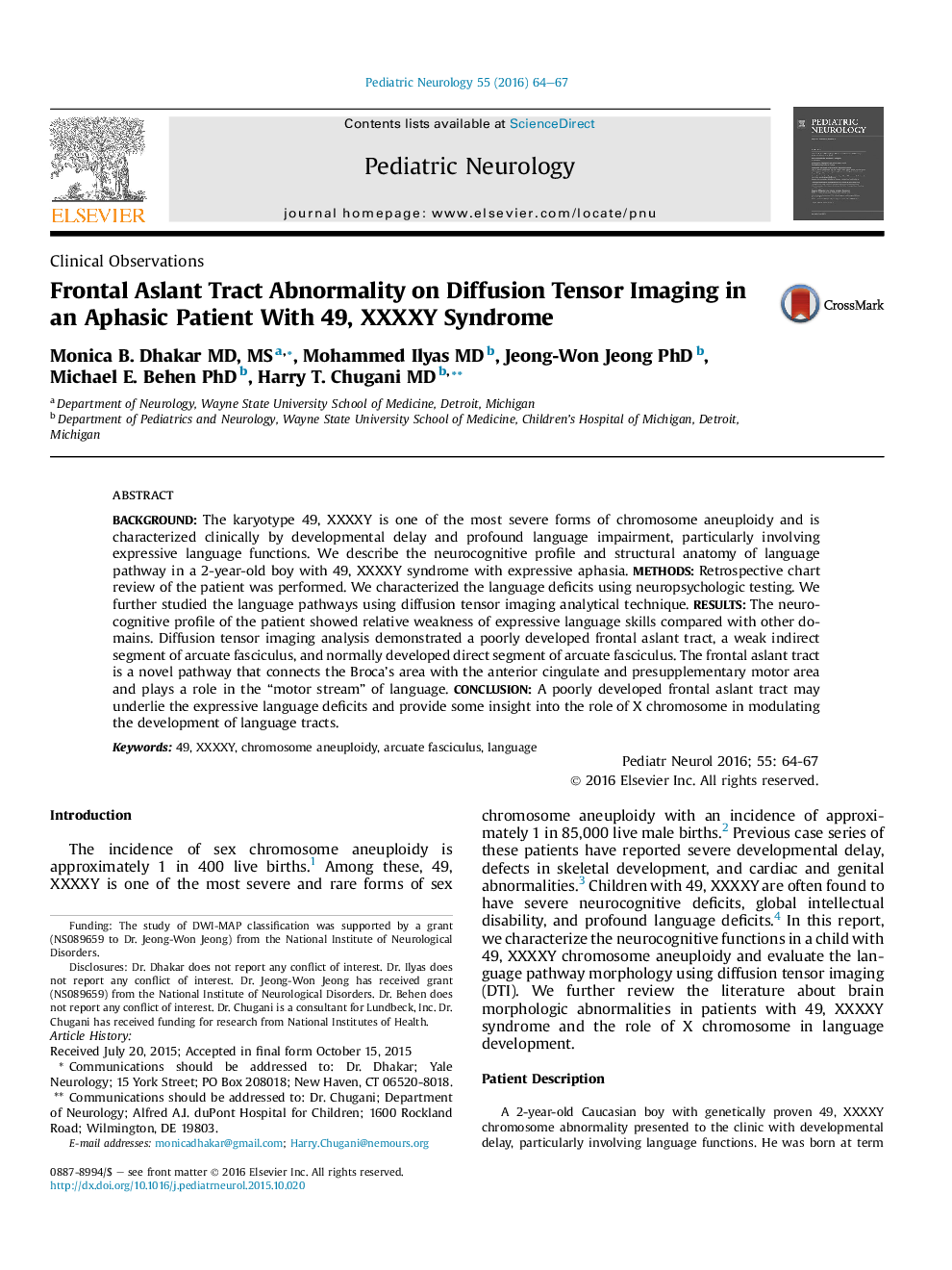| Article ID | Journal | Published Year | Pages | File Type |
|---|---|---|---|---|
| 3084568 | Pediatric Neurology | 2016 | 4 Pages |
BackgroundThe karyotype 49, XXXXY is one of the most severe forms of chromosome aneuploidy and is characterized clinically by developmental delay and profound language impairment, particularly involving expressive language functions. We describe the neurocognitive profile and structural anatomy of language pathway in a 2-year-old boy with 49, XXXXY syndrome with expressive aphasia.MethodsRetrospective chart review of the patient was performed. We characterized the language deficits using neuropsychologic testing. We further studied the language pathways using diffusion tensor imaging analytical technique.ResultsThe neurocognitive profile of the patient showed relative weakness of expressive language skills compared with other domains. Diffusion tensor imaging analysis demonstrated a poorly developed frontal aslant tract, a weak indirect segment of arcuate fasciculus, and normally developed direct segment of arcuate fasciculus. The frontal aslant tract is a novel pathway that connects the Broca's area with the anterior cingulate and presupplementary motor area and plays a role in the “motor stream” of language.ConclusionA poorly developed frontal aslant tract may underlie the expressive language deficits and provide some insight into the role of X chromosome in modulating the development of language tracts.
